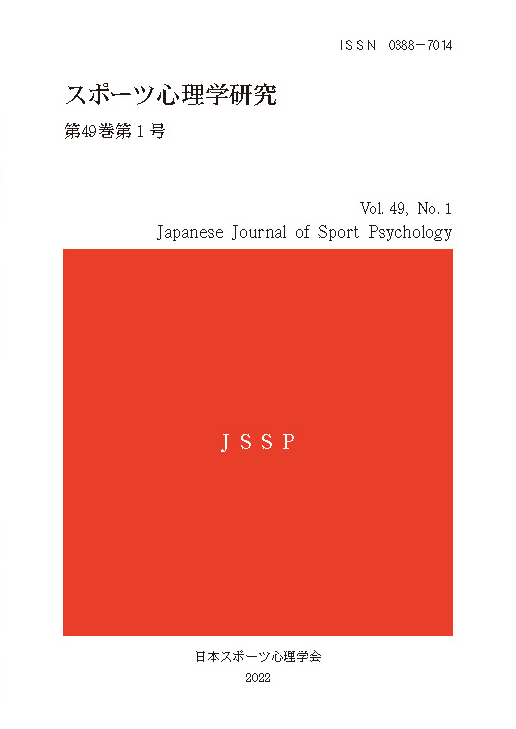Volume 49, Issue 1
Japanese Journal of Sport Psychology Vol. 49, No. 1
Displaying 1-3 of 3 articles from this issue
- |<
- <
- 1
- >
- >|
Review
-
Article type: Review
2022 Volume 49 Issue 1 Pages 5-19
Published: March 31, 2022
Released on J-STAGE: March 31, 2022
Advance online publication: November 13, 2021Download PDF (668K)
Original Article
-
Article type: Original Article
2022 Volume 49 Issue 1 Pages 21-31
Published: March 31, 2022
Released on J-STAGE: March 31, 2022
Advance online publication: January 29, 2022Download PDF (794K) -
Article type: Original Article
2022 Volume 49 Issue 1 Pages 33-47
Published: March 31, 2022
Released on J-STAGE: March 31, 2022
Advance online publication: February 25, 2022Download PDF (1024K)
- |<
- <
- 1
- >
- >|
